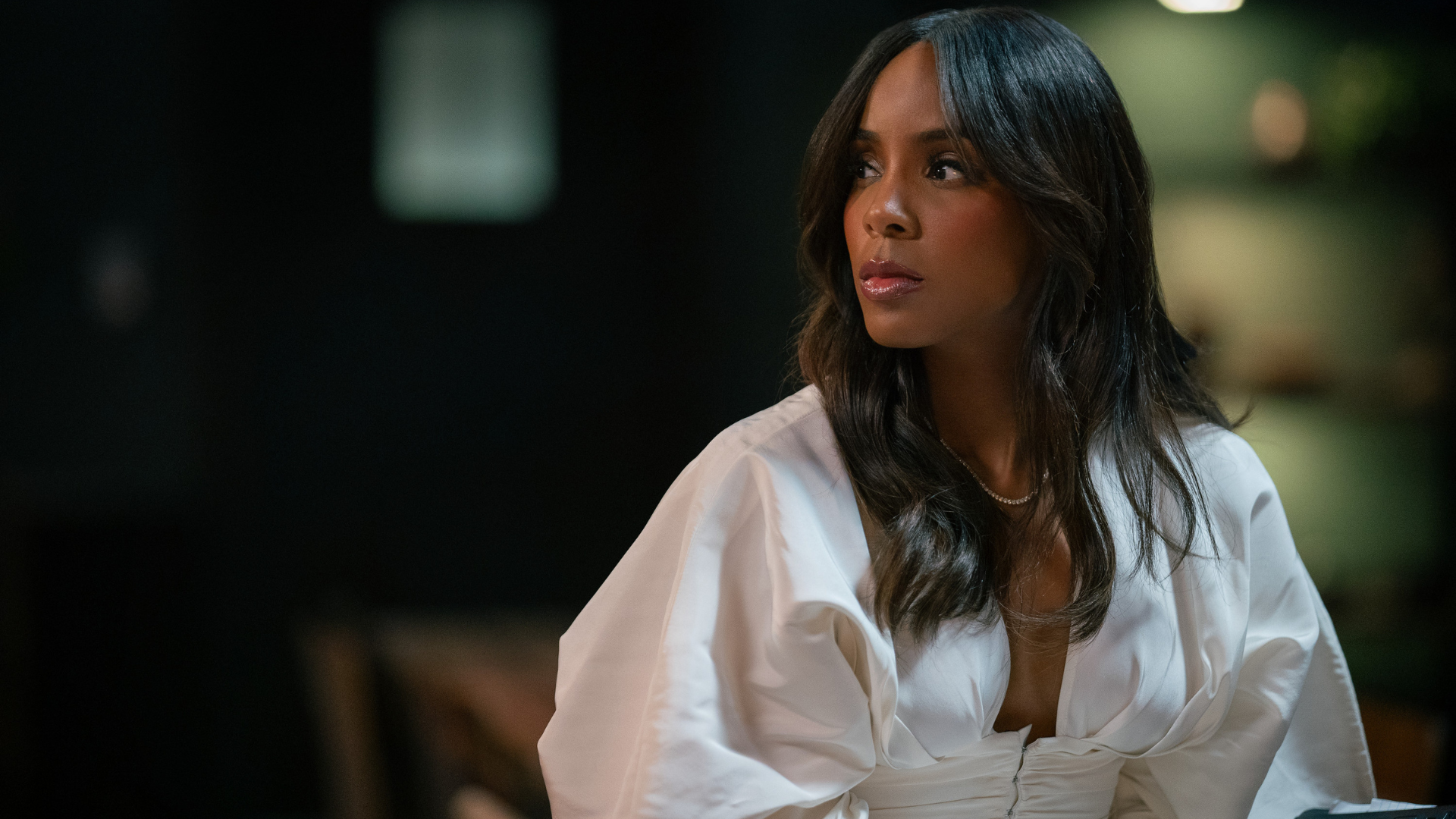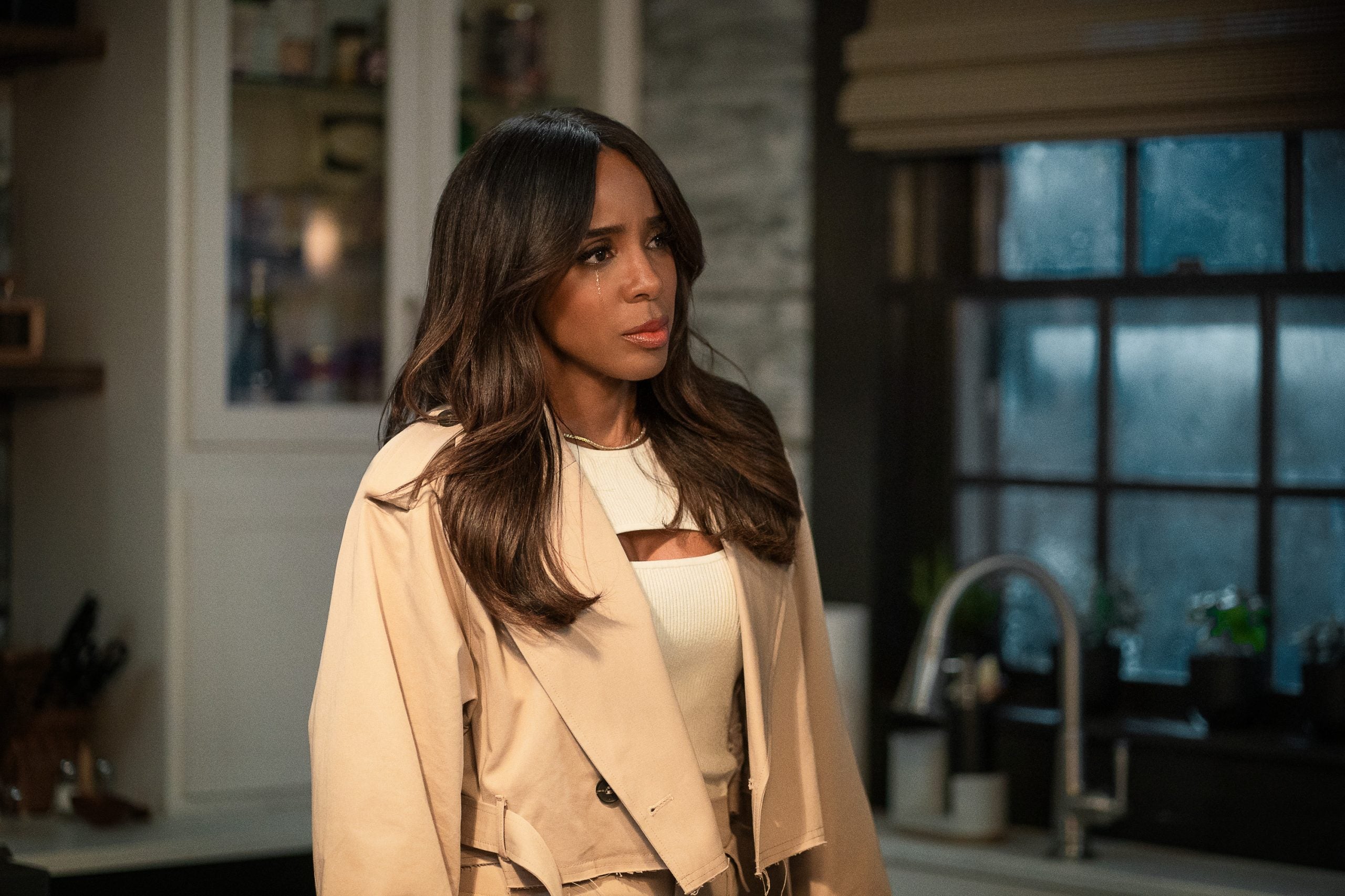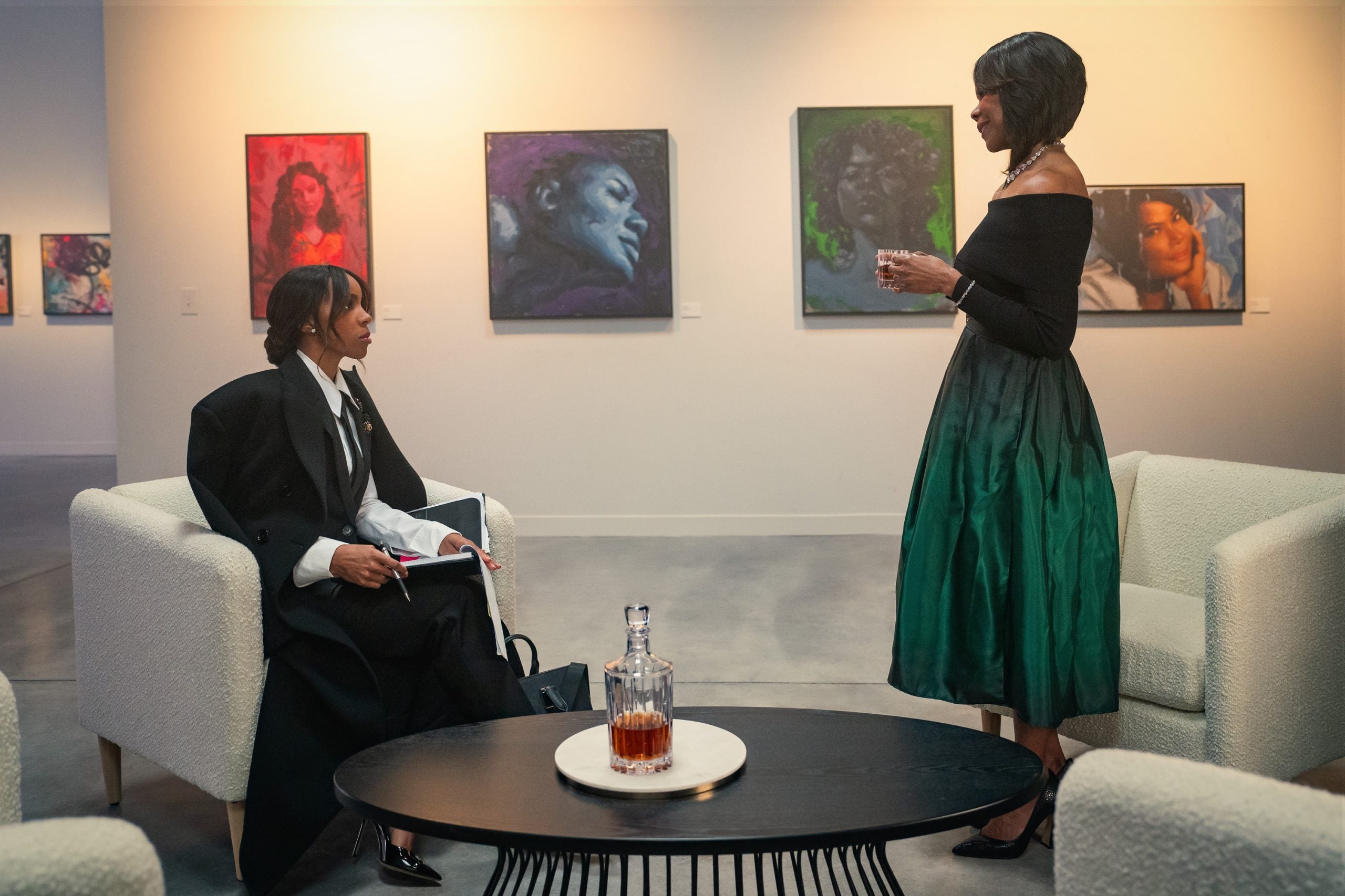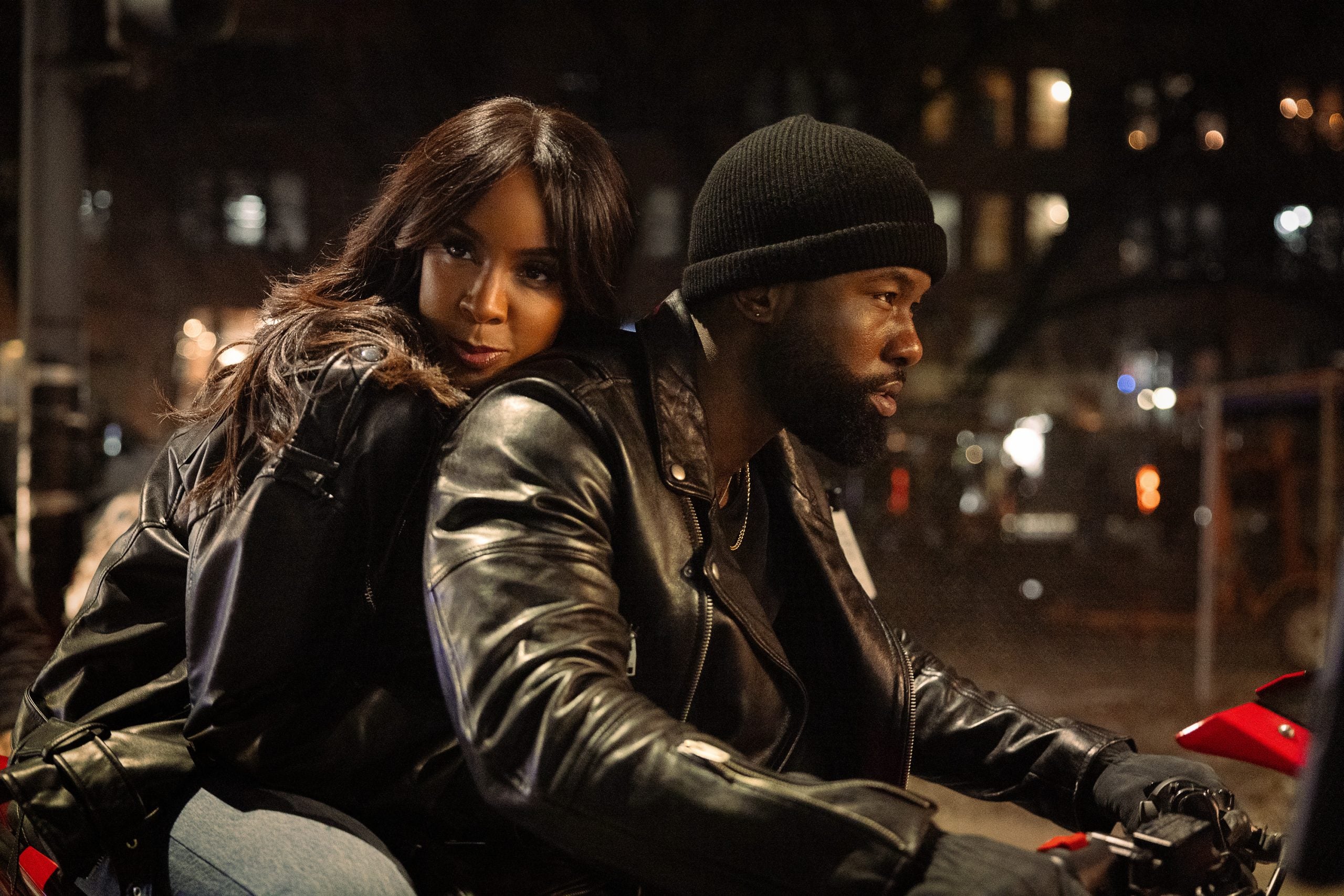
Tyler Perry’s latest film, Mea Culpa, was a thrilling project that left fans eagerly discussing what they had viewed on social media for days. Immediately following its release, across Instagram and Twitter opinions were hard to ignore. The chaos that ensued throughout the movie could be attributed to Mea Harper, a lawyer played by Kelly Rowland. Her character drives the plot of the film and since it centers entirely around her, many of the moments heavily weigh on how she shows up fashion-wise. The costume design led by Raiyonda Vereen, was sharp and assisted in shedding light on what led Mea to delve into unfamiliar territory to get to a truer and freer version of herself. In many moments, she’s painted as an esoteric wife who is defending an artist, Zyair Malloy (Trevante Rhodes), who many feel murdered his ex-girlfriend.
Many of the outfits worn throughout Mea Culpa were lacking in energy and consisted of muted, soulless tones like tans and boring dark blues. In comparison, the titular character Mea shined in countless scenes and her costuming was downright invigorating. From the beginning of the film, it’s clear that only her looks would include tailored and well-cut pantsuits due to her being the only employed woman in her social circle. Aside from this notion, her outfits when she’s in the office present her as an individual who aims to be taken seriously. The hues she wears also point to this: she’s often wearing black when she’s working or billing hours with Malloy. There is often a feminine edge spotted in her outfits; brooches, intricate makeup, and sky-high pumps. These details allude to her explicitly picking how she would like to showcase her femininity as a woman in a male-dominated office.

Only when she is home does Mea let down her inhibitions and relax. When she’s in her sanctuary, she dons comfortable knit sweaters in warm tones like tan. But since she is often out and about, there aren’t many moments where she is able to bask in the calm energy that we imagine one’s home should feel like. The lack of relaxing hues in her wardrobe speaks to how she appears to dive into work to ignore the conflict she deals with, with her husband Kal (played by Sean Sagar).
The power-shoulder look of the ‘80s receives a modern take in this movie too. In that era, suits featured this detail as a way to speak to being on trend. When it’s utilized in the present day, it marks a woman as a style savant and an experimental dresser. There is one scene where Rowland’s Mea is opposite Angela Robinson, who plays a scorned lover of Malloy’s, Renee.

During this key moment, Mea wears a head-turning lengthy blazer-coat in black. Underneath she dons a white button-up shirt, black skinny-leg trousers, and black heels. Her entire outfit is well put together–but what happens in the scene is a verbal shakedown. Renee, a gallery owner, wears an off-shoulder sleeved black shirt, and an elegant deep green satin skirt brings Mea down to earth and forces her to realize she might be a pawn in Malloy’s universe. That’s what makes this power-shoulder outfit choice so interesting, though she may appear to be dressed for battle; she leaves and is left breathless.
On another end of the spectrum, Zyair often wears dark-wash jeans or black pants and dark-toned leather jackets. No matter where he is spotted, the moneyed artist doesn’t appear to care how he’s viewed; he wears what he wants, and the ramifications don’t matter to him. His clothing speaks to the type of life Mea yearns for, a freer one with less expectations to live up to. Their costume design could be core opposites to make this distinction clear–Rhodes’ Malloy is carefree and he also says whatever he pleases. This proves to be appealing to Mea. Opposites are said to attract, and the pairing of these two characters as romantic partners gestures towards this ideal–especially since Mea appears to be confined in her loveless marriage.

As a whole, Mea Culpa’s costume design utilizes clothing to showcase the strength of its most prominent character, Mea. Her power lies in her suits, her low-cut tops and the intricately cut trousers she chooses to wear every day. With this attire, she eventually determines her own fate; she doesn’t wait for anyone to choose it for her. Truthfully, that’s the most compelling and earnest argument that the film makes, that at times one’s clothing must be a means of self-expression, especially for women who are seeking freedom.





